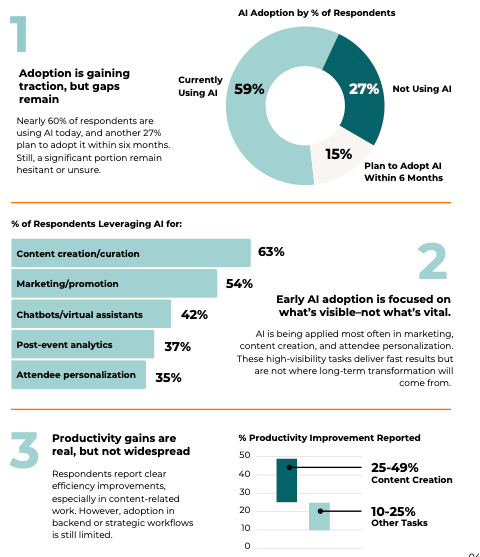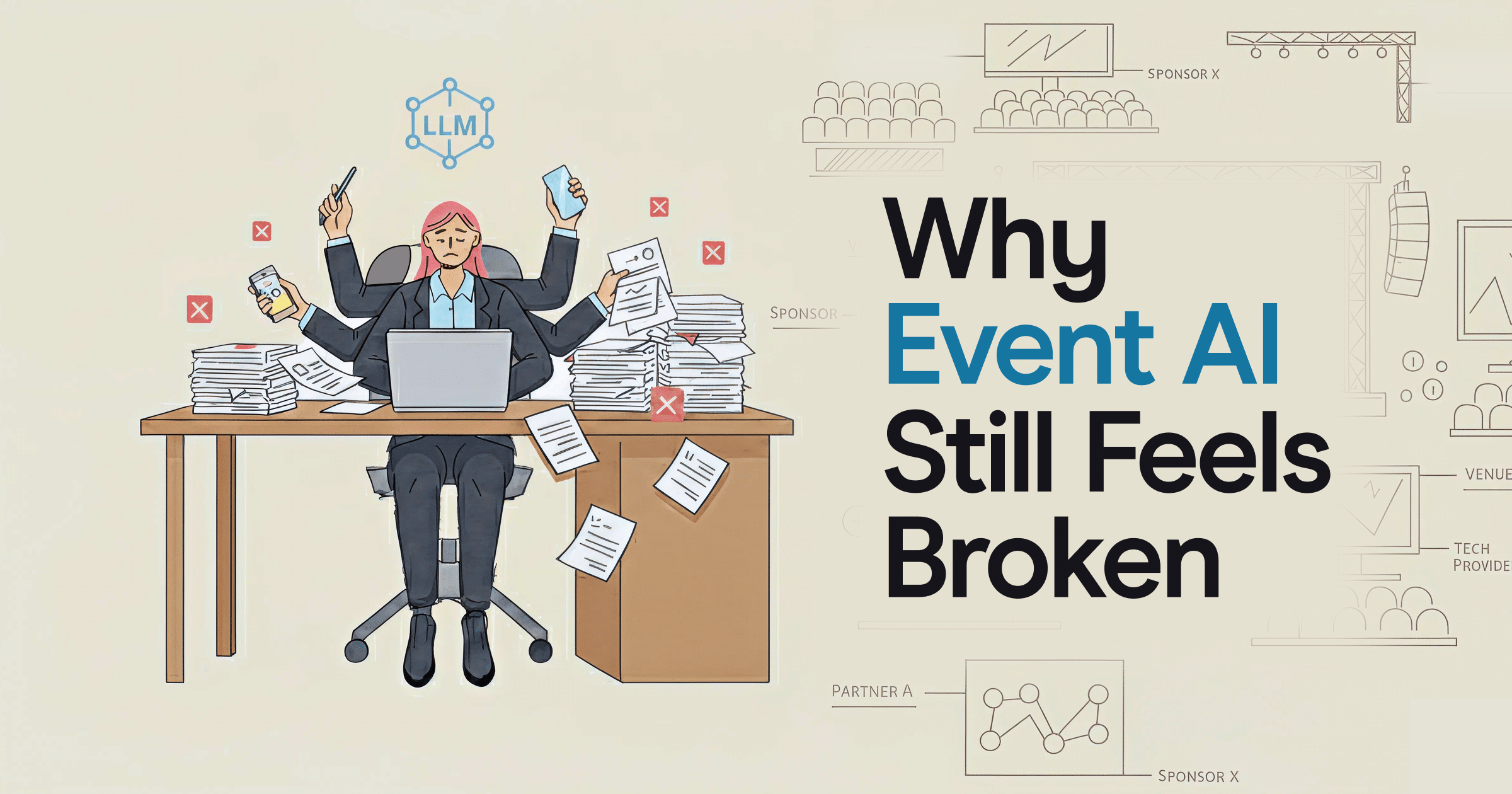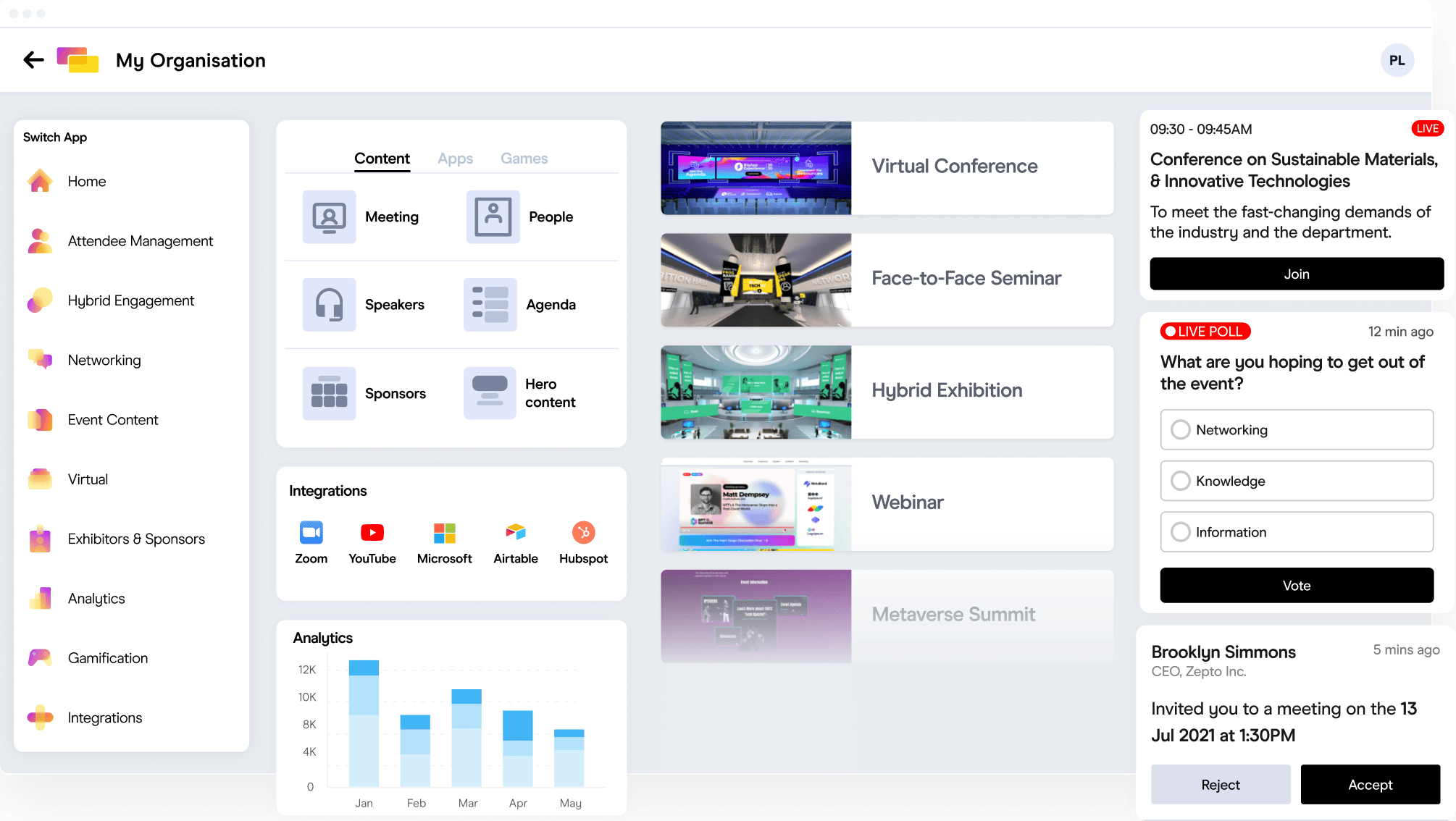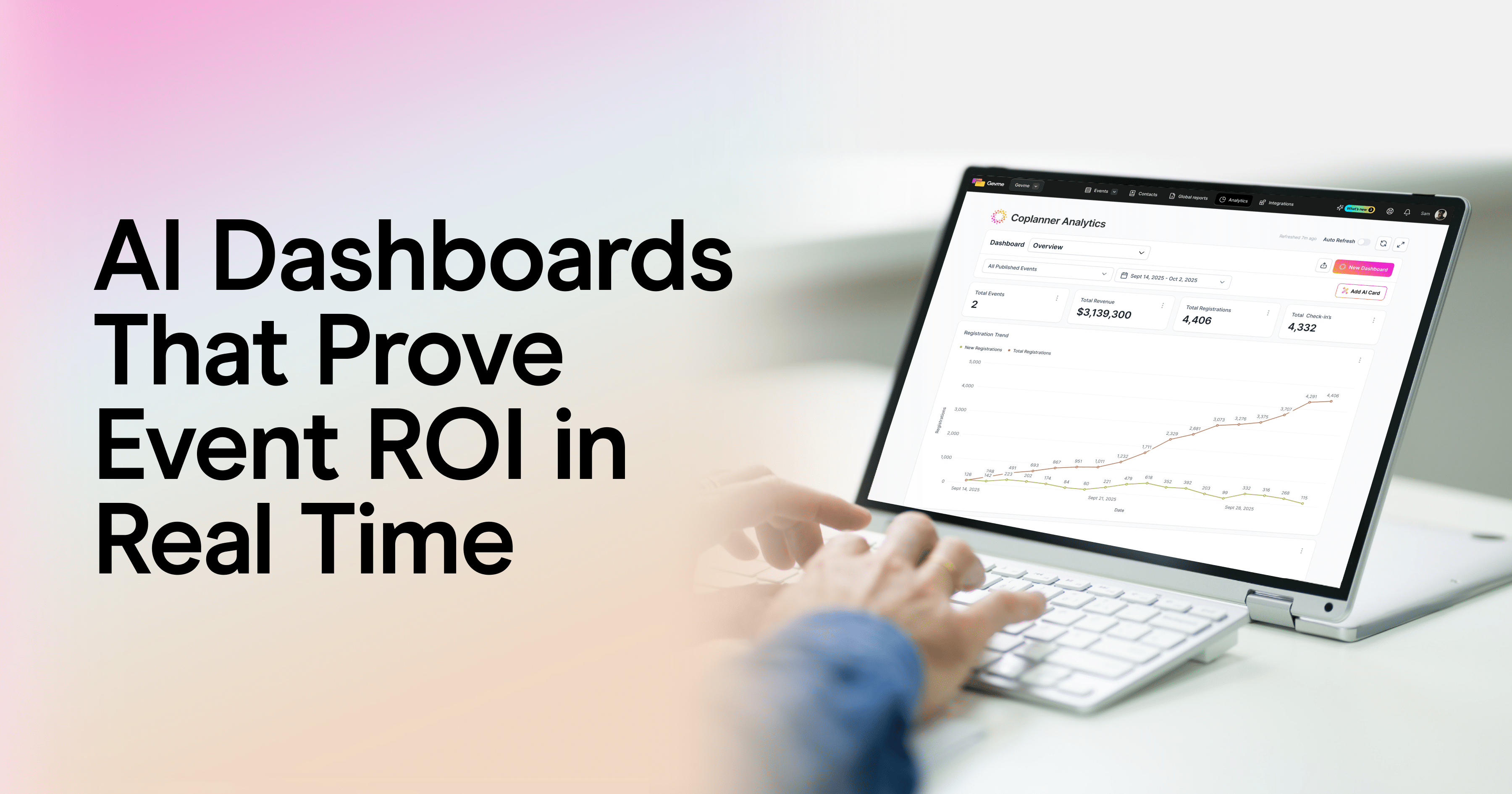The events industry is running headfirst into a talent crunch. 89% of professionals say staffing shortages have directly impacted their events.
With so few hands on deck, the people left are overloaded. Senior event pros, who should be designing attendee experiences and building strategic partnerships, are instead doing low-value tasks, patching tech gaps, and triple-checking logistics.
AI was supposed to be the lifeline. Automate the grunt work, free up scarce talent, and give teams the breathing room to focus on what actually moves the needle. But the reality? Event professionals are testing the tools, and the promised relief never shows up.
In other words: there’s less talent to go around, and the tech that was meant to bridge the gap is still making planners carry the weight.
Why Current Event Tech Isn’t Solving the Real Problems
AI and event tools promised to lighten the load, but planners are still stuck refining content, wrangling data, and managing repetitive setup. Instead of cutting work, tech often reshuffles it, leaving teams juggling tasks while strategy and creativity wait on the back burner.
Next, we’ll look at how these challenges show up in practice and why they keep event pros from working at the level their expertise deserves.
The Content Editing Loop
Generic prompts generate generic text, and the results speak for themselves. Event planners spend hours crafting detailed prompts, only to get back speaker bios that read like vague summaries and session descriptions that could apply to any conference in any industry.
Current AI tools can read documents, but they treat every event the same. Upload your event brief to an LLM, and it might pull out session topics and speakers, but it doesn’t understand that your healthcare summit needs different formatting than a tech conference, or that your mobile app has character limits that your website doesn’t. You get generic output that still requires extensive manual formatting and editing to match your specific event requirements and brand voice.
Every “AI-generated” piece of content becomes a two-stage process: generation plus extensive human revision. A speaker bio typically needs 30+ minutes of editing to match professional standards and event voice. Rather than eliminating work, AI created a new bottleneck where the first stage is artificial and the second stage is entirely human.
The Configuration Burden
Event setup follows the same tedious pattern across platforms. You start with a blank event form and fill in details one field at a time: event name, dates, location, description. Then you create each session individually – title, time, duration, speaker, room assignment. Then you add each speaker profile separately.
This happens for every event, even when you’re running similar programs or building on previous years’ agendas. The information exists, but the systems don’t help you leverage what you’ve already created.
Most automation promises shortcuts that never materialize. Move a session from 2 PM to 3 PM, and suddenly six systems need updates. Emails, agendas, apps, and print materials all demand manual intervention. Tools that claim “auto-build” agendas or programs fall short – planners still check, copy, paste, and correct. The very tech designed to reduce grunt work becomes a source of extra tasks.
The Data Accessibility Problem
37 percent to streamline post-event analytics processes are using AI for analytics, but most event professionals still struggle with the basics: getting their data into a usable format.

The typical post-event analysis involves exporting CSV files from multiple platforms, manually combining registration data with engagement metrics, and spending hours in Excel trying to create charts that stakeholders can understand. Current analytics tools either require technical expertise to set up dashboards, or they provide generic templates that don’t match how event professionals actually think about their data.
When leadership asks for a quick overview of registration trends by audience segment, or wants to see engagement patterns across different session types, teams typically need days to pull that information together – not because the data doesn’t exist, but because the tools don’t make it accessible to non-technical users.
The Strategic Cost
41 percent of survey respondents cited no immediate need to use AI in the planning process. That’s not resistance to change – that’s professionals looking at current AI tools and correctly identifying that they don’t solve actual workflow problems.
The real cost is strategic. While teams coordinate platform updates, market research doesn’t happen. While they format content across channels, partnership opportunities slip by. While they manually pull together reports for stakeholders, innovative programming ideas sit on the shelf.
The impact stretches beyond event teams. Marketing spends hours formatting instead of crafting messages. Sales extracts lead data instead of building relationships. Executives deal with operational issues instead of strategic growth.
Event planners are constantly short-staffed, doing work they’d rather delegate: writing session descriptions, speaker bios, email copy. Even when additional resources are allocated, knowledge transfer is inefficient. First drafts get rewritten and renamed until the file reads: Speaker 1 Bio final draft final final Sep 5 revised final.
What’s Actually Working
Some AI use cases are showing promise – but not in the ways most tools are marketed.
- A freelance planner used generative AI to analyze past F&B consumption at a major conference and build simple forecasting models. Result: Saved planning time, reduced mental load, and highly accurate guarantees. Real workflow impact, not generic content.
- Over a third of organizations use AI to augment attendee personalization – spotting patterns in behavior and preferences to guide strategic decisions, not just drafting email copy.
- Live content capture tools like Snapsight tanscribe sessions in real time, pull key takeaways, and generate “idea clouds” to surface trends. Teams can act on insights immediately, produce post-event reports quickly, and inform next year’s agenda – all without hours of manual note-taking or video review.
The common thread: AI works when it amplifies human decisions and solves workflow problems, not when it just generates (unusable) text.
The Inflection Point
The tools event teams have now aren’t broken because AI itself is flawed – they’re broken because they don’t understand the work planners actually do.
Ideally, planners should be able to make one update and see it reflected everywhere, get insights surfaced in context instead of digging through spreadsheets, and rely on systems that understand the workflow without babysitting. When that exists, teams can reclaim time, focus on strategy and storytelling, and finally work at the level their expertise deserves.
Until then, the workarounds continue – and so does the drain on creativity, focus, and organizational impact.




